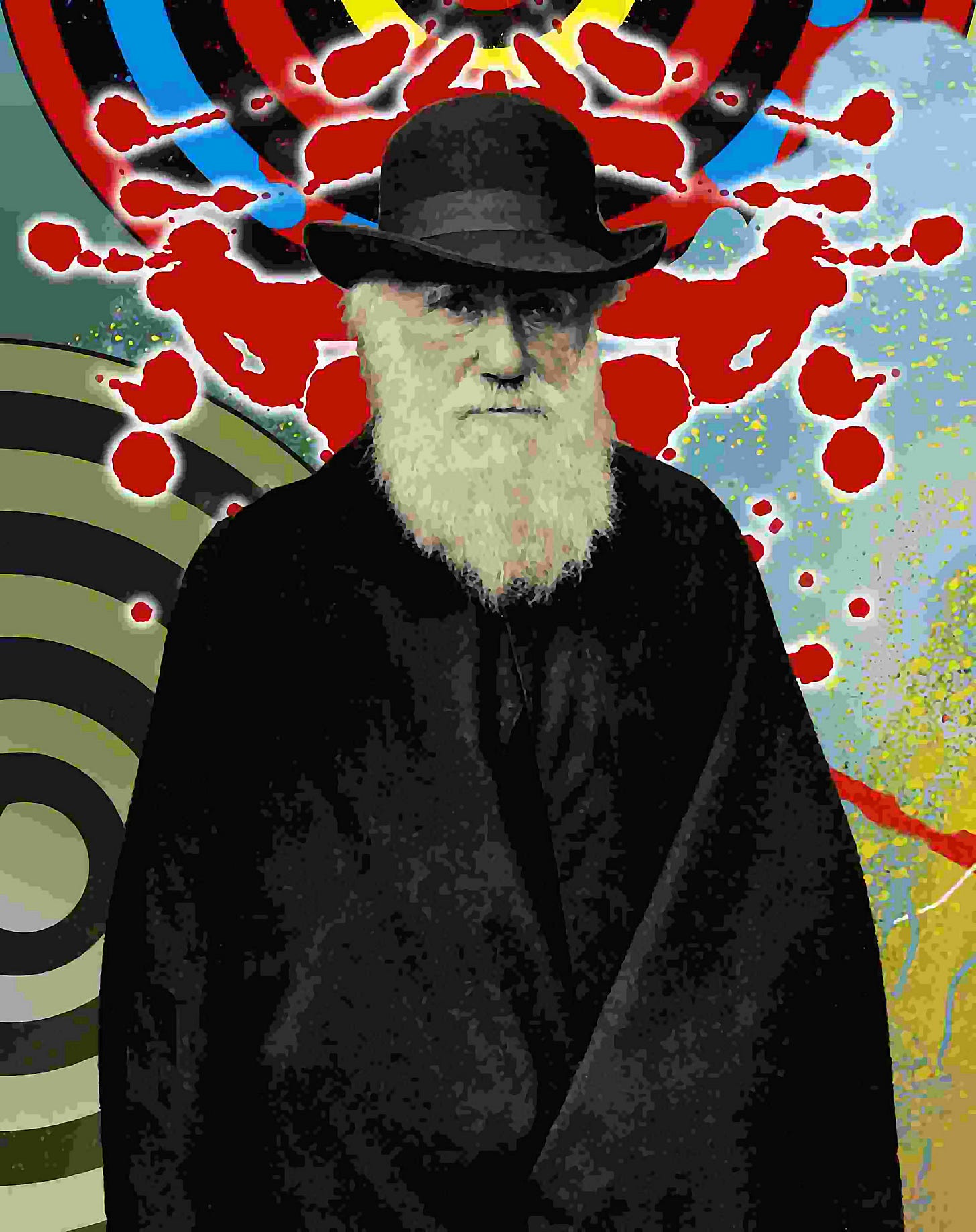Interpreting, reviewing, & answering the 3rd part of Richard Webster’s Why Freud Was Wrong, “Psychoanalysis, Science and the Future.”
(Art by Michelle Horsley)
Darwin
As mentioned, Webster’s positive model of the scientist—his counterexample to Freud—is Darwin. For every poison he attributes to Freud, Darwin is the antidote.
Webster allows that Darwin made a few mistakes, and that he had a theological bias. He even acknowledges “social Darwinism” as less of a misinterpretation of Darwinism than a logical, if erroneous, extension of it. He is aware of Darwin’s close association with Thomas Huxley, although without recognizing what that means, vis a vis the way Darwinism was being applied for sociocultural engineering from the get-go.
Webster doesn’t question that Darwin was a shining example of a true, empirical, and flawless scientific method, or that Darwinism itself was a massive turning point for humankind in its bid to get free of an outmoded creationist, religious perspective.
I haven’t read Darwin, or even much about Darwin. I have not been directly influenced by Darwin in the way I have by Freud. I don’t have much interest in Darwin, and I don’t much trust whatever he had to say about evolution, since I’m confident that, like Freud, he was part of these bloodlines (such as the Huxleys) who are busy introducing pseudo-scientific narratives into the culture, as a means to shape and direct it.
The main point, however, is that Webster doesn’t apply the same sort of skepticism to Darwin as he does to Freud. He, of course, would say that this is because Darwin was good and Freud was bad; but I have no doubt at all that a 600-page book could be written (and probably has been) about Darwin, having a similar thrust to Webster’s book about Freud, exposing all manner of inconsistencies and flaws in Darwin’s oeuvre and life.
But let’s stay on what, for Webster, is the main gain of Darwinism, that it does away with the need for creationism and deism, by coming up with an alternate explanation for existence. The example Webster gives is that of a flower: all of its symmetry, its complexity and beauty, would, for a 19th century theist, have been seen as evidence of a loving God’s creation. A Darwinian perspective, he believes, establishes a whole new rationale for the anatomy of a flower.
Ironically, this is just the kind of unnecessary dualism that Webster claims to be trying to abolish. Clearly, it’s not either/or, and just because Darwin came up with evolutionary reasons for the shape and purpose of flowers, this hardly abolishes the possibility—or the need—for a loving God’s creation.
While Darwinian evolution theory (arguably) doesn’t prove a loving intelligence behind Nature, it is perfectly compatible with it.
Rejection of Carnality Vs Resurrection of the Body
In the end, we do not divide human nature in order to understand it. We divide it because secretly we do not want to understand it. If we did, we might make the terrible discovery that we are only human after all, the only animals in the whole of evolution who like to pretend that they are not animals (p. 494).
This is an example of the mixture of good and bad in Webster’s writing. The idea that we divide ourselves, in a somewhat arbitrary fashion, as a way to conceal the truth about ourselves from ourselves, is I think a necessary one. The split which ratiocination creates between the body and the soul is indeed problematic.
So the way Webster understands Christianity—or misunderstands it—as a rejection of the body, is understandable: because Christianity itself, historically, has misunderstood the New Testament and made this same error.1
In my own understanding of Christian principles, of what Christ embodied, the body (as opposed to “the mental inclination of the body,” which Paul speaks about) is not, per se, the problem. In my understanding, the body and the soul are a continuum, and both are potentially transformed via a fusion with pneuma or spirit—hence we have the Christian (literalized) idea of a resurrection of the body, and of being “born again from above.”





